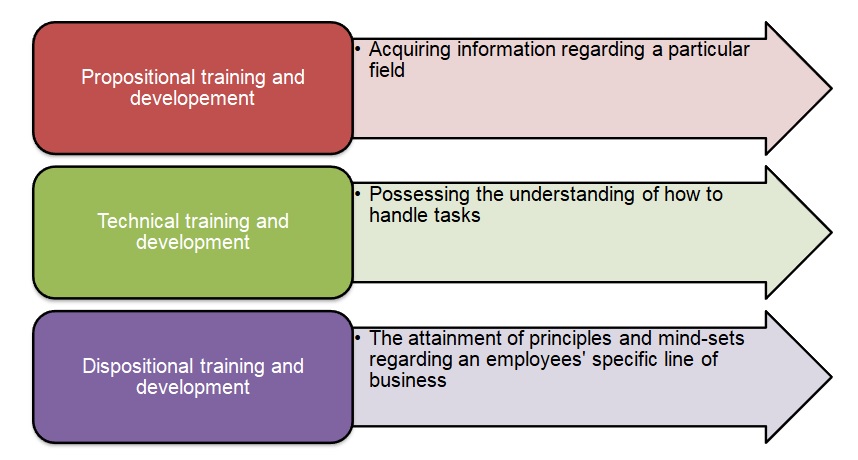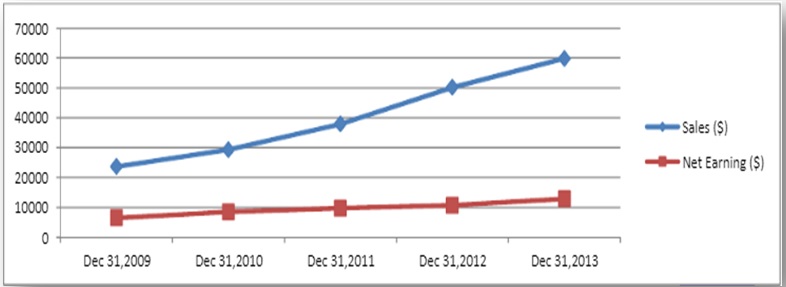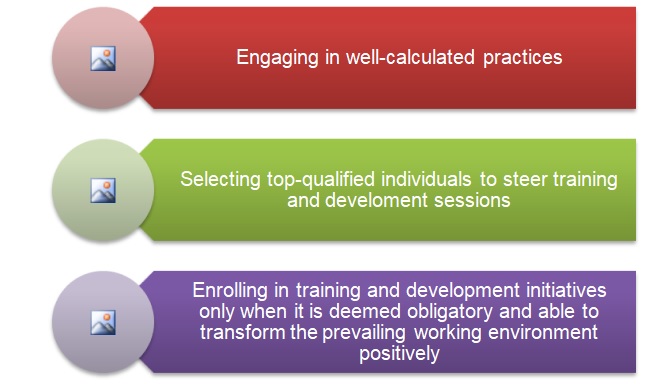Introduction
A business is said to be performing exemplarily if it is able to create an environment that keeps its workers committed to its key agendas or focused on delivering remarkable results. However, ensuring outstanding employees’ performance requires organisations to invest in practices that emphasise issues related to job satisfaction, workers’ commitment, turnover, and absenteeism. The establishment of strategies that focus on organisational profitability, such as working for extra hours or subjecting employees to continuous training, may not yield the desired outcome if no efforts are made to ensure that workers’ demands are met through initiatives that address issues, including work-life balance, incentives, and better remuneration packages.
The human resource management (HRM) arm of any organisation contributes substantially to organisational performance based on its diverse functions that range from employee recruitment and selection, training and development, and the establishment of a proper working environment to creating an atmosphere that balances the welfare of employers and workers. This paper focuses on training and development as part of HRM functions that determine the extent to which organisations can perform in relation to their mission and vision statements. Further, it will use Google as a case study organisation to assess the way its HRM unit has executed this function, including the impact it has had on the organisation.
The Concept of Training and Development
Although many factors such as the existence of incentives and the recruitment of the best pool of employees determine a company’s level of performance, it is crucial to realise that the implementation of continuous training and development initiatives play a key role in ensuring that businesses reap the best out of their workers. However, an organisation may not appreciate the impact of this HRM function on the overall business performance if it does not recognise what it entails. Although Rusaw and Fisher (2017) do not define the concept under investigation, their study reveals that, indeed, the idea of training and development is a continuous process. Its effectiveness is determined solely by companies’ capacity to empower their respective HRM personnel to create a workplace setting that favours employees’ learning and growth (Rusaw & Fisher 2017). The HR unit can only accomplish this requirement when given the necessary resources such as finances, machinery, and prospects for sustainable skills development.
Many companies around the globe are currently investing in strategies that can boost their performance and, consequently, profitability. However, attaining this goal is only possible when they know what organisational performance entails. In their effort to demonstrate the role of training and development in determining the level of workers’ employability, Martini and Cavenago (2017, p. 21) define the concept as an HR process that entails “enhancing employees’ suitability for work within and outside the organisation.” Nonetheless, the article acknowledges that although many organisations embrace the idea of training and development, no definition has been documented capturing the most effective human resource practices regarding workers’ professional progress. According to these authors, virtually all companies are aware of the general idea of on-job training, scholarship, and professional assistance (Martini & Cavenago 2017). However, very few of them actively pursue or make it a compulsory endeavour for all their employees.
None of the above definitions recognises the need for maximising workers’ potential through training and development. As such, they are shallow compared to Curado, Henriques, and Ribeiro’s (2015) perspective of the concept. These authors present it as a process of attaining, deploying, and decisively imparting knowledge to workers to realise institutional objectives. They go a step further in their definition by capturing processes that employers can adopt to ensure that employees view the notion of training and development as a compulsory process that is meant to make them professionals in their respective lines of business. Curado, Henriques, and Ribeiro’s (2015) definition is convincing because it indicates various categories, namely, propositional, technical, and dispositional knowledge areas, that demonstrate employees’ training and development levels. Figure 1 below gives detailed information regarding these aspects.

With the above highlights, it is imperative to find out whether HRM departments have observed any link between training and development and organisational performance.
The Impact of Training and Development on Organisational Performance
The study by Curado, Henriques, Ribeiro (2015) acknowledges the existence of a relationship between training and development and institutional performance. The authors focus on the process of transferring knowledge gained to the workplace, as opposed to giving explicit information indicating whether the observed link is positive or negative. However, according to them, HRM personnel who initiate training and development schemes that are closely associated with employees’ lines of business or professions usually report high levels of motivation and job satisfaction (Curado, Henriques & Ribeiro 2015). Consequently, based on the prevailing positive association between these two elements and organisational productivity and performance, as revealed in studies by Ilciuc (2016), Zeb and Yasmin (2016), and Chowhan (2016), it suffices to conclude that Curado, Henriques, and Ribeiro’s (2015) findings indicate a comparably direct correlation between training and development and institutional profitability.
In addition, Rusaw and Fisher (2017) believe that employees who have been equipped with the necessary knowledge through training and development perform exemplarily. These authors do not directly state that such workers contribute to better organisational performance. Instead, they mention improved organisational health and work output as outcomes of training and development. Hence, it is imperative to examine whether organisational health and performance are related. In this regard, while the study by Bazigos (2015) presents concepts such as reward systems, teamwork, and work-life balance as components of a healthy institution, U-senyang, Trichandhara, and Rinthaisong (2017) believe that creating an atmosphere whereby all sub-systems result in job effectiveness is the foundation of organisational well-being. However, based on the article by Bhalla and Giri (2014), the HRM unit is responsible for implementing views presented in the above two studies with the view of enhancing organisational performance. As a result, Rusaw and Fisher’s (2017) perspectives have a bearing on improved business outcomes.
In their research, Livițchi, Hacina, and Baran (2015) present employees as key strategic assets in which companies invest to realise remarkable organisational results. One way of achieving this goal is through personnel training and development programmes. According to these authors, such initiatives should be tailor-made and flexible to match the prevailing institutional demands. Similar to Bazigos’ (2015) views, Livițchi, Hacina, and Baran (2015) emphasise the notion of having training and development schemes because they result in a motivated workforce that, in turn, has the potential of delivering outstanding organisational results. Similarly, research conducted in Ghana by Boadu et al. (2014, p. 519) revealed a “significant relationship between training and development and job satisfaction”. In a study by Cullen et al. (2014), job satisfaction is directly related to organisational performance. This finding may further be interpreted to mean that proficient and contented workers are linked to high levels of organisational output following their augmented levels of creativity and innovation (Ismail & Rishani 2018). Consequently, it confirms Ravi, Mayya, and Shetty’s (2017) perspectives that training and development agendas form a crucial tool that many HRM units deploy to attain short-term and long-term benefits, including enhancing institutional performance.
Nonetheless, according to Schneider (2017), despite McKinsey’s international survey revealing overwhelming companies’ awareness (90% of participants) of the existence of training and development schemes, it made an interesting observation whereby only 1 out of 10 participants acknowledged the role of such programmes in enhancing organisational performance. This contradicting finding reveals that, indeed, scholars may not agree on the link between training and development and institutional performance. Consequently, future studies on this topic may bring more divergent perspectives. From the examined literature, virtually all studies seem to agree that training and development programmes result in enhanced work motivation, productivity, and, consequently, high-performance levels. As a result, it is imperative to examine a real-life case of an organisation that has implemented the concept under study. The goal is to find out whether the results attained substantiate the above expositions.
Case Study: Google’s Training and Development Initiative
Google LLC is a globally recognised corporation based in America specialising in the provision of Internet-based services and commodities. Having been established approximately two decades ago by Larry Page and Sergey Brin, the company has been ranked among the top-most performing businesses internationally. In particular, according to the study by Latif et al. (2014), the company’s performance has been increasing gradually since 2009, as shown in Figure 2 below.

Many factors, such as its leadership or HRM elements, including the existence of employee relations programmes, incentives, and work-life balance initiatives, may be influencing the company’s remarkable results. However, the article by Lombardo (2017) confirms that indeed the organisation’s human resource personnel have played a considerable role in ensuring that all workers go through vigorous training and development schemes that are meant to sharpen their expertise and, consequently, input, both of which have translated into improved organisational performance. Google’s HRM unit deploys a needs analysis framework that enables it to come up with appropriate training and development strategies that capture its creativity and innovation agenda. In particular, according to Lombardo (2017, para. 3), the company utilises diverse “needs analysis such as organisational analysis, work analysis, and cost-benefit analysis.” The HRM goal of adopting this approach is to realise the best from training and development initiatives.
Regarding its programme design, the company deploys a relational framework and results-centred strategies to not only encourage workers’ creativity and innovativeness but also boost their day-to-day interactions. Google’s human resource team provides various training and development platforms, including dialogues, replication, and on-the-job scholarships, all of which are aimed at enhancing workers’ capacity to resourcefully respond to diverse issues, handle tasks effectively, and/or ensure continuous transfer of the acquired expertise to freshly employed individuals (Lombardo 2017). The company also assesses the level of efficiency of its training and development programmes. The goal here is to find out whether such initiatives have any positive impact on its overall performance. According to Schneider (2017), Google has adopted three strategic methods that encourage its employees to voluntarily enrol in training and development initiatives. As shown in Figure 3, such tactics include:

The company has been performing remarkably for the last few years (Latif et al., 2014). Hence, it may not be exhaustive to examine the root of this performance without mentioning the contribution of its HRM team’s training and development initiatives discussed above.
Conclusion and Recommendations
As revealed in this paper, realising commendable results follows the implementation of diverse initiatives that ensure a balance between employees’ demands and organisational goals. Consequently, organisational HRM units strive to create working environments that encourage workers to give the best input to their institutions. In particular, programmes related to job satisfaction, employees’ commitment, turnover, and absenteeism are initiated to achieve outstanding organisational performance levels.
However, businesses that operate in today’s competitive environment may not record sustainable profitability if their HRM departments do not emphasise the role of continuous training and development in influencing their current and future performance levels. This paper has confirmed that, indeed, a positive relationship exists between training and development and organisational performance. Studies examined to reveal the extent to which companies such as Google LLC have invested heavily in programmes that seek to sharpen their employees’ skills. The goal is to ensure that creativity and innovation levels match the prevailing market requirements. However, since the company’s current training and programme initiatives have the weakness of being focused on experienced workers, the following recommendations may be implemented to improve this situation:
- Establishing a separate training and development plan that captures the unique needs of newly hired workers or those under an internship.
- Upgrading existing programmes to match current market needs.
- Ensuring that each worker gets a chance of spearheading a particular training and development initiative as a way of moulding all of them into better coaches.
Reference List
Bazigos, M. 2015. ‘Fostering organisational health and wellness’, People & Strategy, vol. 38, no. 1, pp. 52-55.
Bhalla, J & Giri, P. 2014. ‘The impact of human resource management practices on turnover and productivity’, Journal of Organisation & Human Behaviour, vol. 3, no. 1, pp. 11-21.
Boadu, F, Dwomo-Fokuo, E, Boakye, J & Kwaning, C. 2014. ‘Training and development: a tool for employee performance in the district assemblies in Ghana’, International Journal of Education and Research, vol. 2, no. 5, pp. 513-522.
Chowhan, J. 2016. ‘Unpacking the black box: understanding the relationship between strategy, HRM practices, innovation and organisational performance’, Human Resource Management Journal, vol. 26, no. 2, pp. 112-133.
Cullen, K, Edwards, B, Casper, W & Gue, K. 2014. ‘Employees’ adaptability and perceptions of change-related uncertainty: implications for perceived organisational support, job satisfaction, and performance’, Journal of Business and Psychology, vol. 29, no. 2, pp. 269-280.
Curado, C, Henriques, P & Ribeiro, S. 2015. ‘Voluntary or mandatory enrolment in training and the motivation to transfer training’, International Journal of Training & Development, vol. 19, no. 2, pp. 98-109.
Ilciuc, C. 2016. ‘Professional motivation – Decisive factor for increasing the performance of the staff’, Scientific Papers: Management, Economic Engineering in Agriculture & Rural Development, vol. 16, no. 4, pp. 181-184.
Ismail, H & Rishani, M. 2018. ‘The relationships among performance appraisal satisfaction, career development and creative behaviour’, Journal of Developing Areas, vol. 52, no. 3, pp. 109-124.
Latif, M, Hassan, M, Latif, A, Rasheed, E & Yousaf, U. 2014. ‘The financial performance analysis of Google Inc. v/s industry technology’. Research Journal of Finance and Accounting, vol. 5, no. 17, pp. 103-109.
Latif, M, Hassan, M, Latif, A, Rasheed, E & Yousaf, U. 2014. ‘The financial performance analysis of Google Inc. v/s industry technology’. Research Journal of Finance and Accounting, vol. 5, no. 17, pp. 103-109.
Livițchi, O, Hacina, L & Baran, T. 2015. ‘Professional training – Effective element of management in achieving of the personnel policy’. Economy Transdisciplinarity Cognition, vol. 18, no. 1, pp. 156-162.
Lombardo, J. 2017. Google’s HRM: training, performance management. Web.
Martini, M & Cavenago, D. 2017. ‘The role of perceived workplace development opportunities in enhancing individual employability’, International Journal of Training and Development, vol. 21, no. 1 pp. 18-34.
Ravi, M, Mayya, S & Shetty, S. 2017. ‘Training and development: a tool to enhance employees’ performance’, Asian Journal of Research in Social Sciences and Humanities, vol. 7, no. 9, pp. 328-341.
Rusaw, C & Fisher, V. 2017. ‘Promoting training and professional development in government: the origins and early contributions of SPOD’, Public Administration Quarterly, vol. 41, no. 2, pp. 216-232.
Schneider, M. 2017. The 3 simple strategies Google uses to help its employees learn. Web.
TechnologyLatif, M, Hassan, M, Latif, A, Rasheed, E & Yousaf, U. 2014. ‘The financial performance analysis of Google Inc. v/s industry technology’, Research Journal of Finance and Accounting, vol. 5, no. 17, pp. 103-109.
The Financial Performance Analysis of Google Inc. V/S Industry.
U-senyang, S, Trichandhara, K & Rinthaisong, I. 2017. ‘Antecedents of organisational health in Southern Thailand’, International Journal of Behavioural Science, vol. 12, no. 1, pp. 79-94.
Zeb, S & Yasmin, R 2016, ‘An empirical investigation into the mediating role of job satisfaction on the linkage between corporate social responsibility and organisational performance’, Abasyn University Journal of Social Sciences, vol. 9, no. 2, pp. 454-478.
